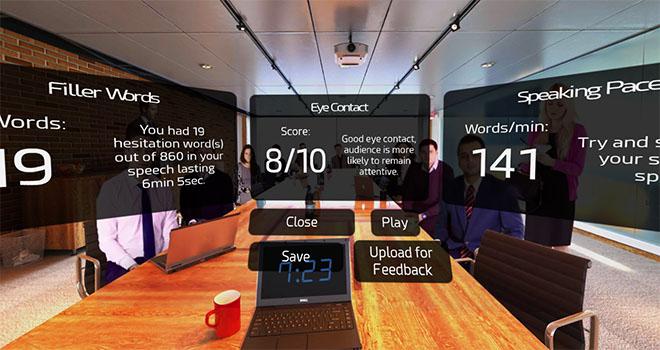Undoubtedly, Virtual Reality has been one of the most discussed topics between educators since the past year. Multiple applications try to exploit its characteristics in order to enhance students’ learning process.
Virtual Speech (Language VR) is an application which through scenarios and a wide range of language situations, aims to use the virtual reality to teach foreign languages. Besides English the user can choose between the following languages: French, Spanish, Portuguese, German and Chinese. Russian, Japanese, Italian and Korean are soon to be released.
Originally the app was developed to help people learn English through simulations of the English culture and landmarks. The idea behind this was to create a more exciting way of learning in a virtual environment. Research shows that visual representations help in maintaining information and learning new vocabulary (Jones, 2010). In addition the use of images helps in making abstract ideas more specific to students.
Below are listed the categories that the user can pick from:
Experience Culture: Virtual Reality (VR) is the possible solution for creating genuine language learning environments in EFL countries for a variety of reasons. The most beneficial part of using VR is the creation of those situations that simulate the physical environment through digital representation (Chen & Chen, 2016). London, Cotswolds, Warwick, Cornwall and many other British places are available to visit.
Vocabulary: The user is asked to locate various objects in beautiful and well-designed rooms. Despite the fact that we really liked this option it should be mentioned that the free version of the app includes only room.
Audiobook Chapters: The user can choose to listen to renowned books such as Treasure Island or Alice in the Wonderland. Of course, it would be an addition if moving or static images could be added as to enhance the student’s involvement.
Basic Tenses: The player interacts with different shapes and objects trying to put them in order while creating sentences. Each object represents a single word. At the moment the user can choose from Present Simple, Past Simple and Future Simple.
Numbers: A realistic space ship simulation game in which the player tries to maneuver his spacecraft to the right number. It’s not just a language learning game, but it certainly enriches the whole experience.
Roleplaying Speeches: It is a fact that through virtual reality it is possible to simulate situations that would be either too expensive or unfeasible to perform (Dávideková, et al., 2017). On this axis the user can simulate a speech, an interview, make a reservation for a hotel etc. It is a fact that there is no feedback based on what is said, but this may have had dubious results and would certainly require some financial consideration such as the purchase of the application.
Rewards and statistics: Finally, it is possible to record some of the user’s achievements which are earned after completing certain activities.
Language VR will help teach English language and culture by providing photorealistic virtual reality environments to students to talk, listen, interact, and ultimately play.
The application is fully compatible with Google Cardboard and is available for Android, IOS, and GearVR devices. You can find out more here https://virtualspeech.com/
Bibliography
Chen, X. and Chen, M. (2016). The Application of Virtual Reality Technology in the EFL Learning Environment in China. Proceedings of the 2016 International Conference on Sensor Network and Computer Engineering.
Dávideková, M., Mjartan, M. and Greguš, M. (2017). Use of Virtual Reality in Education of Employees in Slovakia. Computer Science, 113, pp. 253-260.
Jones, A.D. (2010). Science through photography. Science through photography. Science and Children, 47 (5), 26-30.


